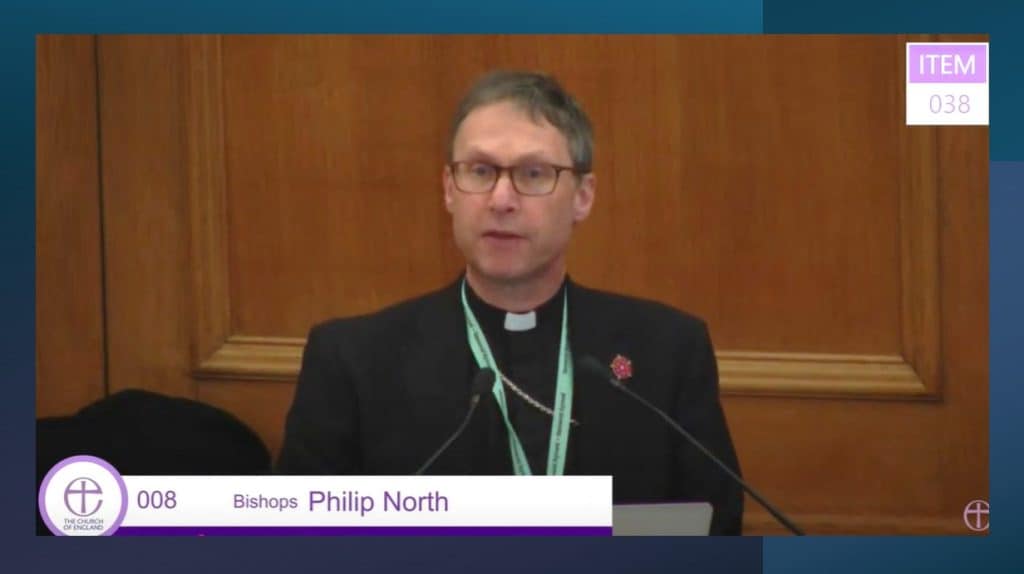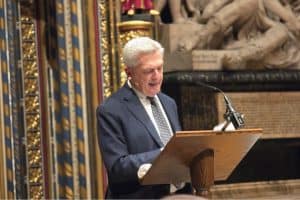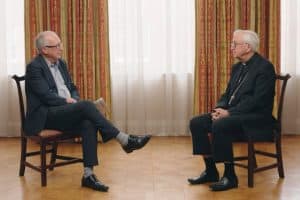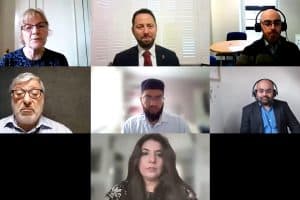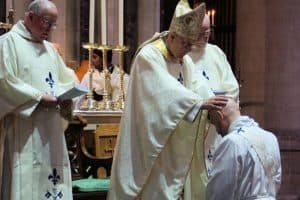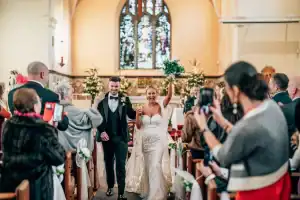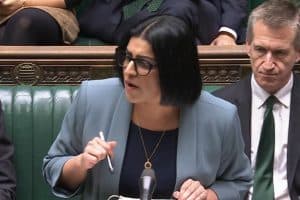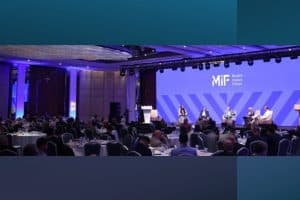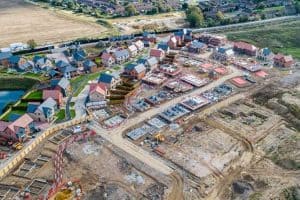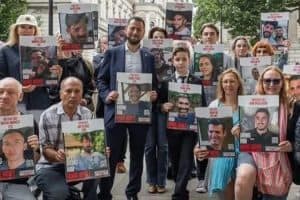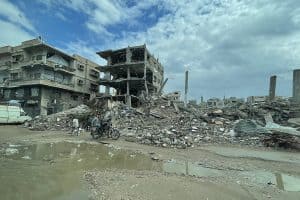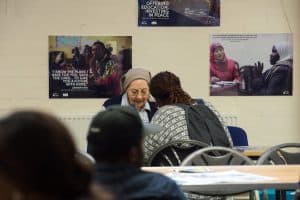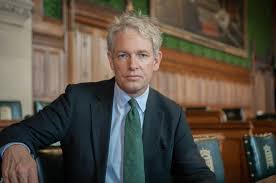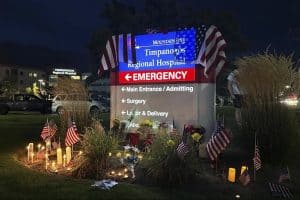The Church of England general synod has “missed an opportunity” to make its safeguarding operation fully independent, according to Bishop Joanne Grenfell, who tried to get the proposal through. Instead, the general synod voted for a halfway house, where national safeguarding officers are transferred to an external organisation, but in dioceses and cathedrals, safeguarding officers remain employed by the church.
The push for change followed multiple safeguarding failures, including
Cover up over abuse by John Smyth, leading to Archbishop of Canterbury’s resignation >>
Retirement of the Bishop of Liverpool after sexual harassment and abuse allegations >>
Calls for Archbishop of York to resign over handling of Chemsford diocese vicar, once jailed for sex abuse >>
The decision not to adopt a fully independent safeguarding process, meant synod ignored advice from the entire senior leadership, including the Archbishop of York, the safeguarding lead bishops of Stepney and Birkenhead, the Bishop of London, the Second Church Estates Commissioner Marsha de Cordova, an external organisational change consultant hired to produce the report, and survivors.
Instead, synod adopted a measure proposed by the Bishop of Blackburn, Philip North, who promised afterwards that the option for full independence will come back to synod, after more work on how it can be implemented.
Survivors’ representatives said they were furious and hugely disappointed, it was a punch in the gut, and they accused synod of kicking the can down the road.
The motions as passed:
‘That this Synod:
(a) thank all those involved in Church safeguarding, particularly the victims and survivors who give so generously of their wisdom and experience, often at great personal cost, and parish safeguarding officers who make sure that safeguarding is a priority in every level and all those who support them in dioceses;
(b) affirm its commitment to greater independence in safeguarding in the Church of England;
(c) thank the Response Group for its work for greater independence in safeguarding in the Church of England, and, noting the significant reservations around model 4 in paragraph 62 of GS 2378 and the legal advice from VWV dated 31st January 2025, endorse model 3 as the way forward in the short term and call for further work as to the legal and practical requirements necessary to implement model 4.
(d) lament and repent of the failure of the Church to be welcoming to victims and survivors and the harm they have experienced and continue to experience in the life of the Church.’
Live stream debates:
Tuesday 11 Feb morning >>
Tuesday 11 Feb afternoon >>
Model 3 and Model 4
There were two models put before the synod, outlined in a 66 page document here.
Model 3:
- Scrutiny body established paid for by church with independent chair, to look at CofE safeguarding activities – inspections, implementation, standards, final stage complaints
- All diocesan and cathedral safeguarding staff remain church employees
- The National Safeguarding Team transfers to an external organisation
- NST provides supervision to church staff, driving consistency, visibility of cases
- Diocesan advisory panels become regulatory bodies, with scrutiny and enforcement powers
- Diocesan safeguarding teams will supervise parish volunteers
- Policy created by synod and National Safeguarding Panel
- Bishops are responsible for safeguarding decisions
Model 4:
- Scrutiny body as above,
- All safeguarding staff transfer to external organisation
- External body ensures standards & training, supervises staff
- Scrutiny body deals with concerns from church leaders, oversee responses to complaints, promote consistency
- Diocesan safeguarding teams, employed by external organisation, will supervise parish volunteers
- Policy created by synod and National Safeguarding Panel
- Bishops are responsible for safeguarding decisions
Speakers in favour of full independence under Model 4
External co-chair Response Group, Lesley Anne Ryder
Lesley Anne Ryder was co-chair of the group which pulled together the options before synod, with experience of change management in the NHS and care sector. She said: “You are very complicated. The news of the last few months has confirmed to me and to the public that this level of complexity is incomprehensible. It is counter productive. One of the ways in which you are losing the trust and confidence of the nation is because you have rules and ways of working which are difficult to understand… I see no reason why model 4 should not eventually become a much simpler and streamlined way to deliver church safeguarding than you have now.’’
Bishop Joanne Grenfell, lead bishop on safeguarding
Explaining her support for Model 4, the bishop said the issue was about ensuring consistency: “I do not believe that we can do that adequately without bringing those staff into one external body where they are independently line managed..I’m aware of the scrutiny of parliament. I am also aware of the views of the charity commission that issues of trust must be addressed..To restore trust, we need to set things up in a way that means that there can be no actual or perceived conflicts of interest or undue pressure exerted from anyone inside the church.”
Marsha de Cordova, MP, Second Church Estates commissioner
In her maiden speech, Marsha de Cordova said she had not foreseen the storm about to engulf the Church of England when she was appointed to her role in October and had received correspondence from constituents, distressed clergy, victims and survivors: “I am clear that this must be a watershed moment for the church to change its culture and its approach to safeguarding as these failures can never happen again.. Model 4 will be that first step towards restoring trust indeed this is the approach that is preferred by victims and survivors and a recommendation of the Jay review”.
The Archbishop of York, Stephen Cottrell:
“I support independence in safeguarding. I have also lived with the constraints of the inadequacies of our processes and their lack of scrutiny, and I think I may know more than most how inadequate and unsatisfactory this is … I’ve also seen, as Archbishop, the lack of consistency or provision of resource between our dioceses and I know, as I think we all know, that trust has been broken and that really matters. I therefore continue to believe that we need a step change in the way we do safeguarding and although I do welcome this debate now between models three and four, I do believe that model four is the right way forward and I also believe that it need not mean our safeguarding teams will not continue to be embedded in our dioceses and part of what we do. I will support wherever we get to at the end of this afternoon because we must make change”.
The Bishop of London, Sarah Mullaly:
The Bishop of London gave a message to synod from Baroness Elizabeth Butler Sloss, a former president of the Family Division and chair of the Ecclesiastical Statutory Committee of both the houses of Parliament and Lords. She said: “She wanted me to say to this synod that she is concerned about the state of safeguarding of the Church of England. She believes that it is not only essential but also urgent that the church moves more rapidly than usual to set up independent safeguarding to manage the Church of England safeguarding issues”.
The Bishop of London supported Option 4: “The system is broken. I want to recognise the concerns expressed about the complexities of model four, but they can be overcome, in fact we need to overcome them for the sake of survivors and victims .. The real risk is that we will kick into the long grass, independent operational safeguarding never to be seen again. We cannot do that. For change to happen, we require independent scrutiny and independent safeguarding operational arrangements”.
The Bishop of Birkenhead, Julie Conalty, deputy lead of safeguarding
Bishop Julie Conalty called out the arrogance of the church in resisting radical change: “We are inherently resistant to independent voices. We like to be special. We hide behind a complexity that we have created and claim that outsiders don’t understand us and we never allow for the possibility that the problem might be that we don’t understand safeguarding”. She said safeguarding experts “told us that they were shocked at how we failed to publicly acknowledge the serious implications of the (Makin) report and at how arrogant we sounded. .. I wonder if it is our inherent arrogance that stops us from recognising our need for radical change, from hearing criticism, and that prevents us from going the extra mile”.
The Dean of Blackburn, Peter Howell, whose Cathedral hit the headlines after a Canon facing abuse allegations, was removed from office, sued and was paid a settlement by the diocese. The Dean backed Model 4 because, he said, the CofE cannot manage its own safeguarding adequately.
Survivor the Rev Valerie Plumb, said she felt unsafe in the church as a survivor, a woman and a priest. Action must be taken now. The system is broken, people should be held accountable, and urged the synod to vote for Model 4.
Survivor the Rev William Harwood called for a root and branch reform of the House of Bishops and praised the Bishop of Newcastle saying she was the bishop of courage and transparency. He backed moving in the direction of Model 4: “Survivors are crying out for something that will force the upper echelons of the church to change their internal culture”.
Those against Model 4 included
The Bishop of Rochester Jonathan Gibbs, said culture prevented the church putting victims first, but keeping safeguarding professionals in the diocese would have the chance of changing the culture. backed up by external scrutiny.
Peter Collier QC, Vicar General of Province of York, raised legal and practical issues of adopting Model 4, especially in relation to the responsibilities of trustees to the Charity Commission, raising the possibility that the church may have to ask for a change in the law to comply: “That seems a very uncertain and risky route to be setting out on in order to achieve Option 4.”
Model 3.5 – Bishop of Blackburn, Philip North
The Bishop of Blackburn, Philip North, proposed an amendment. He said it didn’t need to be either or, Option 3 or Option 4. He proposed a “third way”, introducing change quickly under Option 3, and then analyse data and address legal issues and safeguarding professionals’ concerns before introducing Option 4.
“This amendment is about the very opposite of long grass. Whilst we Implement Option 3, we can establish a definitive view on whether Option 4 is legally deliverable. We can analyse the data to base our decision on firm evidence. We can work with the safeguarding professionals to understand their concerns and either respond to them or bring them with us. Anyone seeking to resolve a difference of opinion seeks a non-binary solution, a third way… The issue of safeguarding Independence is too important to fail. This amendment means that if our radical plans are too much, we will still be able to show real progress making us a safer church, because above all this amendment enables action and change now not in several years time, but now, and that’s surely what we all want to see”.
His amendment won by an overwhelming majority, with the final vote on the whole measure 392 in favour, 9 against and 6 abstentions
Reaction:
Bishop Joanne Grenfell, lead Bishop for safeguarding, paid tribute to survivors whose stories were heard: “I am disappointed that we may not do today as much as we could have done today. We need radical change to both our culture and our structures… I also give my commitment to doing the further work that I know we need to do around model 4 which we will start as soon as possible.
Bishop of Newcastle, Helen Ann Hartley, who has previously called for the Archbishop of York to resign and sat at the back of the hall, away from other bishops, told us: “I’m really disappointed because it will look like a can has been kicked down the road and will send a bad signal to victims and survivors. It’s disappointing a bishop put forward the amendment. because that’s the culture we are trying to move away from”.
Jane Chevous, Director of Survivors’ Voices, told us she believed the synod had kicked the can down the road. She felt totally betrayed as a survivor, was “totally gutted and hugely disappointed”. She said survivors expect too much of the church. Regarding the argument that there were legal challenges in Option 4, she said the response group had obtained legal advice throughout and di not raise objections”.
Andrew Graystone, who represents victims and survivors and exposed the abuser John Smyth, took to Twitter / X and was then quoted in The Telegraph: “The Church of England had an opportunity to start to rebuild trust, by admitting that it needed expertise from outside. But instead, they have chosen to keep it in the family. Shocking arrogance, and a punch in the gut for victims and survivors of abuse.”
The Bishop of Blackburn, Philip North, spoke to journalists after the vote and said Option 4 is very much still on the table and will come back to synod in a way that it can be implemented, though he couldn’t say when. It would have been irresponsible to vote for something that couldn’t be implemented because of issues such as the legal and financial responsibilities of dioceses. Due diligence was needed. But his amendment meant certain changes such as consistency of approach and regional supervision could come quickly.

